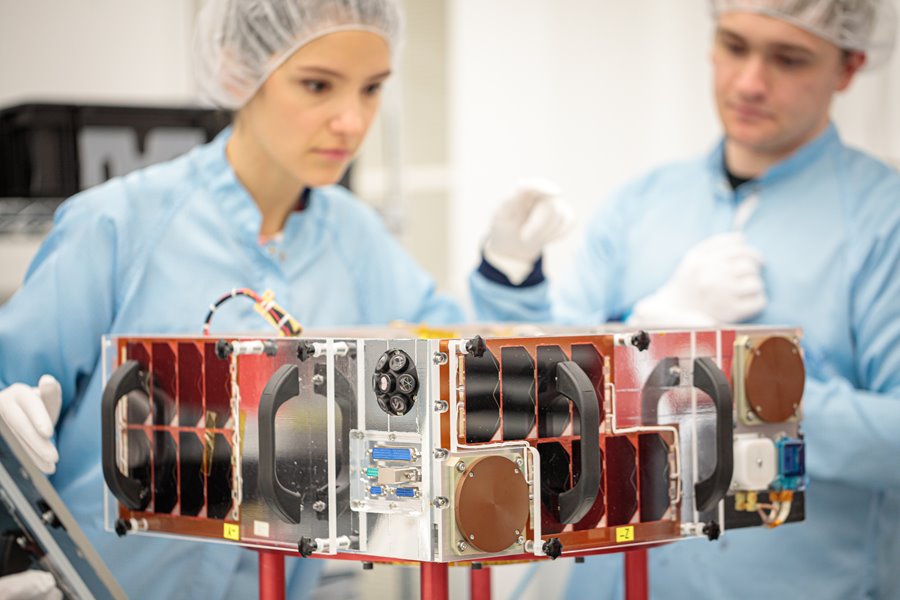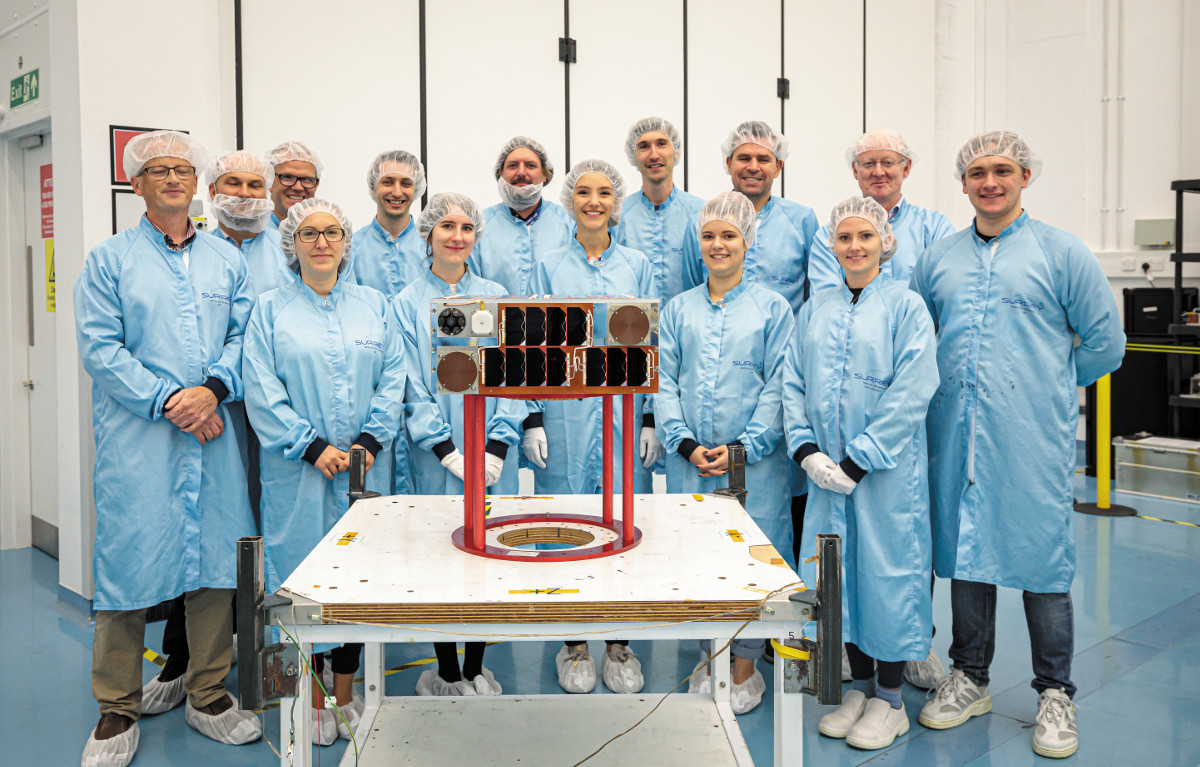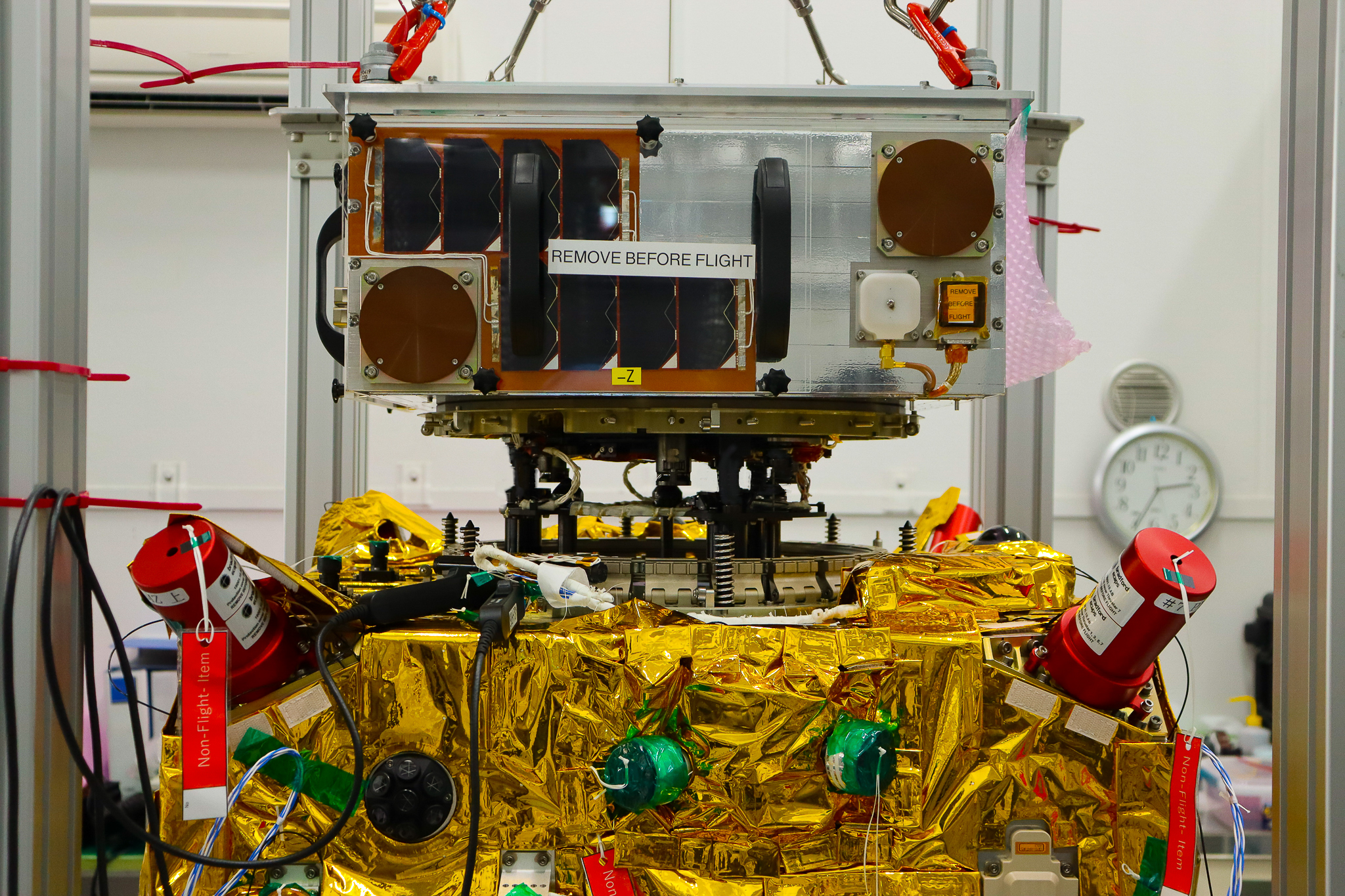
SSTL's Bena Mero is the Systems Engineer on the ELSA-d Client satellite. Here she shares her insights into working on the first mission to demonstrate the core technologies necessary for space debris docking and removal.
ELSA-d is a technology demonstrator mission consisting of two individual spacecraft: the Servicer and the Client. Together they will perform a series of experiments in increasing complexity to demonstrate Astroscale’s satellite tracking and capture capabilities; the ultimate goal being to use future Servicer spacecraft to find, capture and deorbit defunct satellites that would otherwise be “space junk.”
Aside from contributing some of the Servicer subsystems, SSTL designed, built and tested the Client spacecraft. As the Systems Engineer and Technical Lead of the Client, I have had the good fortune to oversee its development from its initial concept at kick-off to the fully functional satellite at delivery. This journey has certainly been hard work, but has also been very rewarding. I wanted to share with you some of the considerations that went into its development.
A unique mission
This mission is quite unique in that it involves two satellites operating independently in very close proximity. When they are attached (or the Client is “docked”) there is a risk of electromagnetic interference with the Servicer, and when they are separated there is a risk of collision. Seeing as the aim is to decrease space debris, that wouldn’t be ideal. Of course, no mission is without risk, but our aim was to minimise these risks as best as possible.
Mitigating risks - a key consideration for a Systems Engineer
On the Client side, we itemised all possible failures from interface to system-level and analysed each scenario in detail. To mitigate each failure, we designed in features in the system FDIR (Failure Detection Isolation and Recovery), like watchdogs that perform a specified recovery action if they detect an error. The Client has to be entirely autonomous, but it isn’t operating alone, so our risk mitigation strategy couldn’t be isolated either. This work also involved countless discussions and workshops with Astroscale to determine the best way forward, particularly from an operations perspective.
Test campaign
Once the spacecraft components were built and integrated into a full system, we began the test campaign to verify all spacecraft functionality and suitability for space. We ran end-to-end tests simulating the satellite’s operations in orbit, environmental tests like vibration tests to ensure the craft would survive launch, and thermal vacuum tests where the spacecraft temperature is cycled to simulate sunlight and eclipse in orbit. We also did an extensive campaign analysing electromagnetic compatibility to confirm that the Client and Servicer wouldn’t interfere with the other’s operation or communication with their ground stations. In addition to this, we ran numerous tests targeting each individual safety mechanism. These verified that spacecraft would keep itself safe and act predictably in the event of a failure.

Bena (centre) with the SSTL ELSA-d Client team
ELSA-d Client joins the Servicer satellite in Japan
On successful completion of the spacecraft test campaign we shipped the Client out to Astroscale in Japan where it underwent further testing as a joint system with the Servicer.
ELSA-d Servicer and Client Satellites, Image courtesy of Astroscale

ELSA-d Client, courtesy of Astroscale
Ready for launch! #GoELSAd
Now, our little Client is patiently waiting on the launch pad, ready to be the first satellite “recovered” in orbit and I, for one, cannot wait to see these satellites in action!
Bena Mero, ELSA-d Systems Engineer